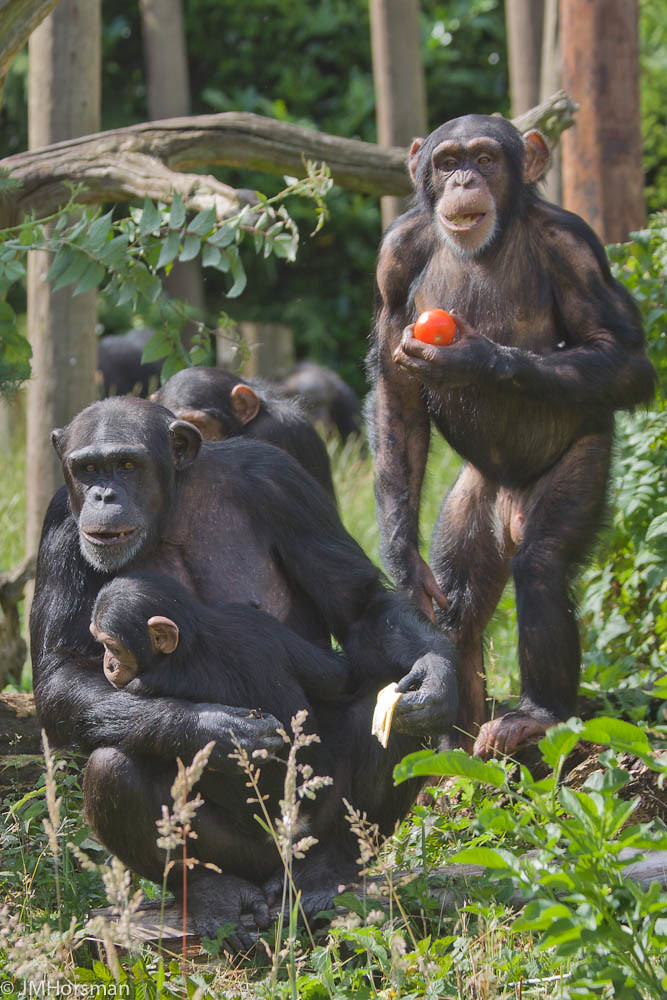
Rules of chimpanzee visits in Kibale national park: Safety is crucial during chimpanzee tours in Kibale national park which is the reason why several rules and regulations are implemented at the location.
Found in western Uganda, Kibale national park is a chimpanzee trekking site. Tours allow one to view many other primate species including around 1500 chimpanzees from the park.
Participating in chimpanzee trekking and also chimpanzee habituation experiences, chimps travel about Kibale forest national park. Tours spend time with the chimpanzees and closely observe their actions throughout both these events.
The guidelines established for chimpanzee visits in Kibale national park consist in the following:
Individuals let to participate in chimpanzee excursions in Kibale national park must be at least 12 years old. Among other activities available around the national park, children can participate in guided nature excursions or village walks.
Sick visitors including flu are not permitted to participate in the chimpanzee trekking or habituation activities in Kibale forest in order to stop the disease from spreading to the chimpanzees.
Additionally discouraged is littering in the Kibale forest during the chimpanzee trip since there are areas near the park where trash may be disposed of.
Furthermore discouraged is noise making during the chimpanzee visits since it disturbs the primates and makes it difficult to view them since the noise scares them.
Visitors from the chimpanzees should keep a distance of roughly eight meters during their trips in Kibale national park. This makes visiting the chimpanzees and easy to spend time with them in their natural habitat possible.
Furthermore discouraged during the chimpanzee visits near Kibale national park is the use of flash photography to document the chimpanzees.
Furthermore forbidden is eating in the presence of the chimpanzees when visiting Kibale national park in order to prevent disturbing their feeding patterns.
Additionally discouraged from feeding the chimpanzees during their primate interactions in Kibale park are visitors. This is so since chimpanzees can survive on the forest and feed themselves.
Additionally forbidden during visits to Kibale national park is copying chimpanzee sounds.
When visiting Kibale National Park, tourists are not permitted to pursue the chimpanzees either.
One hour has to be spent among the Kibale national park chimpanzees in order to prevent stressing out them.
These guidelines among others are shared during a briefing at Kanyanchu, the park headquarters, during visits to Kibale national park. Visitors viewing the chimpanzees in the forest are advised to accompany them for safety reasons.
Every person must attend the briefing before starting the chimpanzee visits in Kibale national park.
Experience of a chimpanzee tour at Kibale national park
Visitors of Kibale national park can participate in the morning chimpanzee trekking activities as early as 08:00 am. The chimpanzee trekking adventure begins with information given by the ranger guide at the park headquarters.
Starting with a briefing, chimpanzee trekking in Kibale national park takes place in the afternoon about 02:00 pm. Travelers then spend up to four hours exploring the forest in search of the chimpanzees under their designated ranger guide.
Once the chimpanzees have been located, visitors spend roughly one hour among them observing their activity, taking pictures and films of them. Tours over the jungle also reveal additional primates like red tailed monkeys, black and white colobus monkeys, vervet monkeys, l’hoest monkeys.
Another meeting with the chimpanzees of Kibale forest is the chimpanzee habituation experience, which lasts a whole day and entails engaging with chimpanzees going through the process of getting accrossed to human presence in their natural habitat.
Kibale national park chimpanzee tour costs
Permission fees, transportation, lodging and food expenses, extra activity prices, and personal expenses are among the several expenses paid for chimpanzee trips in Kibale national park.
Rules of chimpanzee excursions within Kibale National Park
The Uganda Wildlife Authority issues permits for chimpanzee visits in Kibale national park; they can be reserved via licenced tour companies. For foreign non-residents, Kibale national park’s chimpanzee trekking licenses cost 250 USD; for foreign residents, they cost 200 USD; for East African citizens, they cost 180,000 Uganda shillings. For foreign nonresidents, Chimpanzee habituation permits in Kibale cost 300 USD; for foreign residents, 250 USD; for East African citizens, 250,000 Uganda shillings.
The type of transportation one uses to arrive to Kibale national park will affect the travel expenses. Public or private transportation is the difference. Individual public transportation from Kampala can run roughly 35,000 Uganda shillings. Although daily private transportation to the national park may run between 100 to 300 USD.
Depending on the type of lodging—budget, mid-range, or luxury—accommodation prices surrounding Kibale National Park can go from 100 USD to 500 USD per night. Meals run from five to forty bucks per. Among the lodges dotting the national park are Ndali, Chimpundu, Crater safari lodge, Kibale forest camp, Turaco treetops resort, Primates lodge among others.
East African residents pay 20,000 Uganda shillings; foreign nonresidents pay 40 USD for park entrance fees; foreign residents pay 30 USD. Permission fees for chimpanzee visits include the national park entrance charge for the park.
What should one pack for visits in Kibale National Park for chimpanzees?
Long sleeved shirts, long pants, hiking shoes, thick socks, insect repellant, water bottle, snacks, camera, sunglasses, sunhat, garden gloves, rain jacket, sweaters, binoculars, sunscreen among others are some of the things you should take for the chimpanzee visits at Kibale national park.
The stuff to pack for the chimpanzee trip around Kibale national park would depend on the season—that of dry or rainy. The dry season from June to October is the ideal time to visit the national park.
